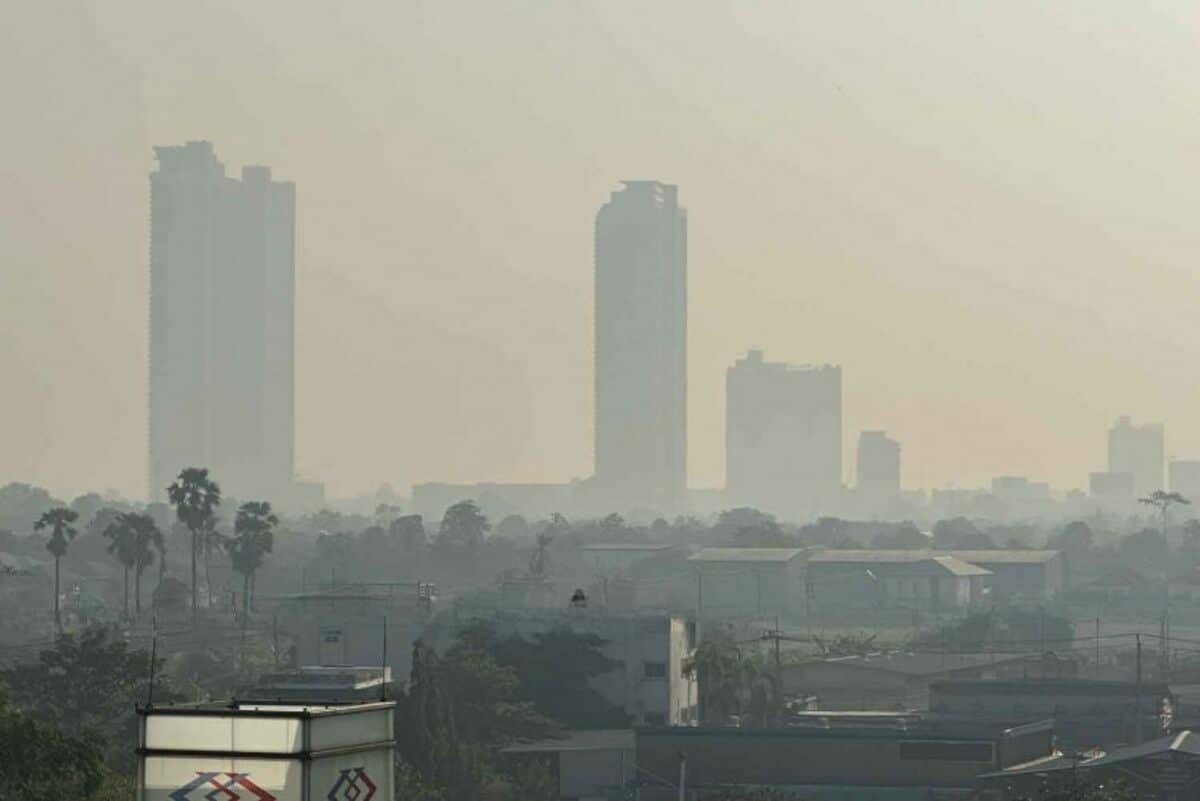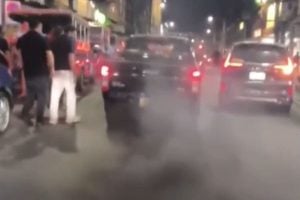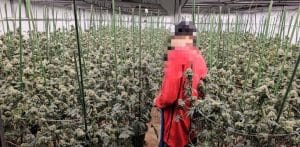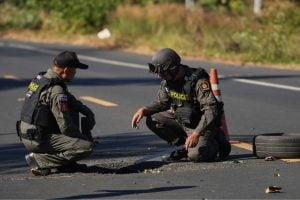Toxic air crisis: 70 provinces choked by dangerous dust levels

Thailand woke up to alarming air quality today, with ultrafine dust particles (PM2.5) reaching hazardous levels in 70 of 77 provinces, and Greater Bangkok bearing the brunt of the toxic haze.
The Geo-Informatics and Space Technology Development Agency (GISTDA) revealed that PM2.5 levels surged into the red, or hazardous-to-health, zone in 27 provinces, primarily in central Thailand. At 7am, Samut Sakhon recorded the worst air pollution, with a staggering 144.8 microgrammes per cubic metre (µg/m³) of air – nearly four times the government-set safe threshold of 37.5µg/m³.
Bangkok wasn’t far behind, with a PM2.5 reading of 125.1µg/m³, followed by dangerously high levels in nearby provinces: Nakhon Pathom (119.3), Nonthaburi (116.3), and Samut Prakan (115.3). Other areas in the danger zone included Ratchaburi, Ayutthaya, and Sing Buri, all exceeding 100µg/m³.
“Prolonged exposure to such pollution can pose severe health risks.”
Residents are urged to avoid outdoor activities and to wear masks.
Meanwhile, 43 provinces experienced orange-level air quality, classified as harmful to sensitive groups, with readings between 37.7 and 75µg/m³. These included Lopburi, Chon Buri, and Rayong.
In contrast, only seven provinces reported air deemed safe. Coastal provinces Phang Nga, Surat Thani, and Chumphon recorded moderate air quality, while Krabi, Chiang Rai, Chiang Mai, and Mae Hong Son enjoyed good air conditions, with PM2.5 levels as low as 12.4µg/m³ in Mae Hong Son, reported Bangkok Post.
With the smog showing no signs of abating, government officials are under mounting pressure to implement measures to curb pollution and protect public health. For now, much of Thailand remains under a choking cloud of toxic air.
Agricultural burning, particularly during the dry season, contributes significantly to haze and particulate matter. Vehicle emissions, industrial activities, and construction add to pollution in cities like Bangkok. Government efforts include monitoring air quality, promoting cleaner fuels, and discouraging agricultural burning. However, critics argue that enforcement and proactive policies remain insufficient to tackle the root causes.
Latest Thailand News
Follow The Thaiger on Google News:


























